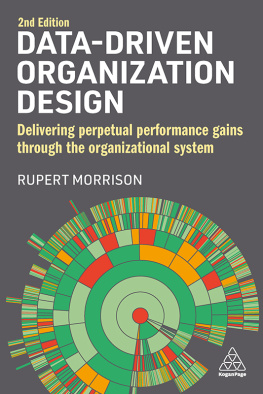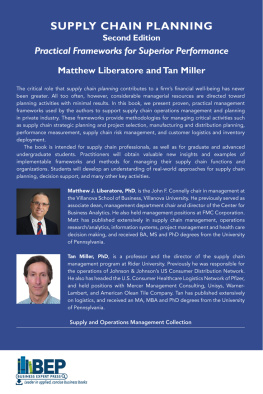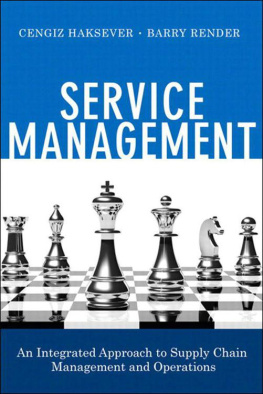Marc Helmold
IUBH, Berlin, Germany
Warda Samara
IUBH, Berlin, Germany
ISSN 2192-8096 e-ISSN 2192-810X
Management for Professionals
ISBN 978-3-030-20533-1 e-ISBN 978-3-030-20534-8
https://doi.org/10.1007/978-3-030-20534-8
Springer Nature Switzerland AG 2019
This work is subject to copyright. All rights are reserved by the Publisher, whether the whole or part of the material is concerned, specifically the rights of translation, reprinting, reuse of illustrations, recitation, broadcasting, reproduction on microfilms or in any other physical way, and transmission or information storage and retrieval, electronic adaptation, computer software, or by similar or dissimilar methodology now known or hereafter developed.
The use of general descriptive names, registered names, trademarks, service marks, etc. in this publication does not imply, even in the absence of a specific statement, that such names are exempt from the relevant protective laws and regulations and therefore free for general use.
The publisher, the authors, and the editors are safe to assume that the advice and information in this book are believed to be true and accurate at the date of publication. Neither the publisher nor the authors or the editors give a warranty, express or implied, with respect to the material contained herein or for any errors or omissions that may have been made. The publisher remains neutral with regard to jurisdictional claims in published maps and institutional affiliations.
This Springer imprint is published by the registered company Springer Nature Switzerland AG.
The registered company address is: Gewerbestrasse 11, 6330 Cham, Switzerland
About the Book
The book Progress in Performance ManagementIndustry and Case Studies on Principles, Application Tools and Practice outlines how organizations and enterprises will achieve excellence in performance management in a systematic, professional and effective way, thus securing long-term competitive advantages. The book has several unique selling propositions (USPs). It is written by two experts in performance management from industry and from academia. The book has many practical examples and cases of performance excellence. Included are here the practical experiences of the authors Prof. Helmold (M.B.A.) and Warda Samara (M.L.M.) from exposures to international organizations. Performance excellence is outlined by explaining concepts and tools along the value chain of organizations. The book is a very good symbiosis of theoretical frameworks existing and the application in the producing industry, the service sector and the public sector. The tools, industry examples and cases of the book show many best practices and have therefore significant relevance to industry and academia.
Performance management (PM) must be an integral part of any organization or enterprise. PM activities integrate the performance measurement, performance management and the permanent performance improvement. The key questions to this are: What is performance management? How can I measure performance? Where do I measure performance? How is your performance measured externally? How do I improve my performance across the value chain?
PM is therefore described as an applied, systematic and structured approach of the successful management of enterprises, systems, processes, employees, departments and organizations to ensure that goals and objectives are being reached efficiently and effectively. The book is targeting practitioners at managerial and staff level, who contribute directly or indirectly to the value chain like procurement, operations, marketing, sales, human resources and finance or quality management. Secondly, lecturers and professors will be able to enhance their teaching and research. Finally, students at bachelors and masters levels in business, engineering or other disciplines will get in-depth insights into performance management. The book contains many practical examples and case studies.
Chapter outlines the existing gap in industry and academia in PM to look at PM from a more holistic viewpoint across the entire value chain with primary (procurement, operations and marketing) and secondary functions (finance, HR, IT) and find suitable frameworks for professional and practice-oriented international negotiations. Although the market offers several books in PM, practitioners and academics stress that these books are limited to organizational performance or financial performance.
Chapter displays how PM must be part of the corporate strategy. Strategy phases contain the strategic analysis, choice and implementation. It is important that PM is properly executed in line with the long-term aspiration and intent of the organization.
Chapter shows the pitfalls of quantitative and qualitative methodologies in PM. In many cases, it is recommendable not to rely on either quantitative or qualitative approaches as both methodologies have weaknesses in terms of data reliability.
Chapters focus on the primary value chain functions like procurement, operations, marketing and sales.
Chapter outlines the upstream value chain or supply side. As organizations are increasingly shifting non-core activities to suppliers (outsourcing), it is important that the supply side is managed well performance wise.
In Chap. , PM tools in operations are explained. 5S, the elimination of waste and the focus on value-adding processes are the key success factor for performance excellence. The chapter ends with the description of lean principles.
PM in marketing and sales is illustrated in Chap. (downstream). This function is the interface between customers and the demand side; therefore, it is a key activity to understand customer requirements, which can be transmitted into the organization.
Chapter shows PM excellence models and concepts like the balanced score card (BSC), quality management systems (QMS), the European Foundation for Quality Management (EFQM), the Baldrige excellence model (BEM) or the performance to excellence model (P2EM).
Chapter illustrates important tools that are of practical relevance like macro (PESTEL analysis) and micro (Porters five forces) analyses. PM tools can be used effectively in industry and service sectors as part of improving performance.
Chapter concentrates on PM in complex projects. Project management has certain characteristics and is often executed in cross-functional teams. Projects are time-limited and unique, so that PM plays a significant role in this context.
Chapter outlines financial PM including ratios and financial tools like the P & L account, the cash flow statement or the balance sheet. This section gives recommendations for organizations which face financial stress.
Chapter illustrates PM in non-government and non-profit organizations. The final case study shows how performance can look like in public organizations.
Chapter outlines PM in the area of the support function human resources (HR). HR has the responsibility to create an environment in which employees and managers can develop superior performance.










